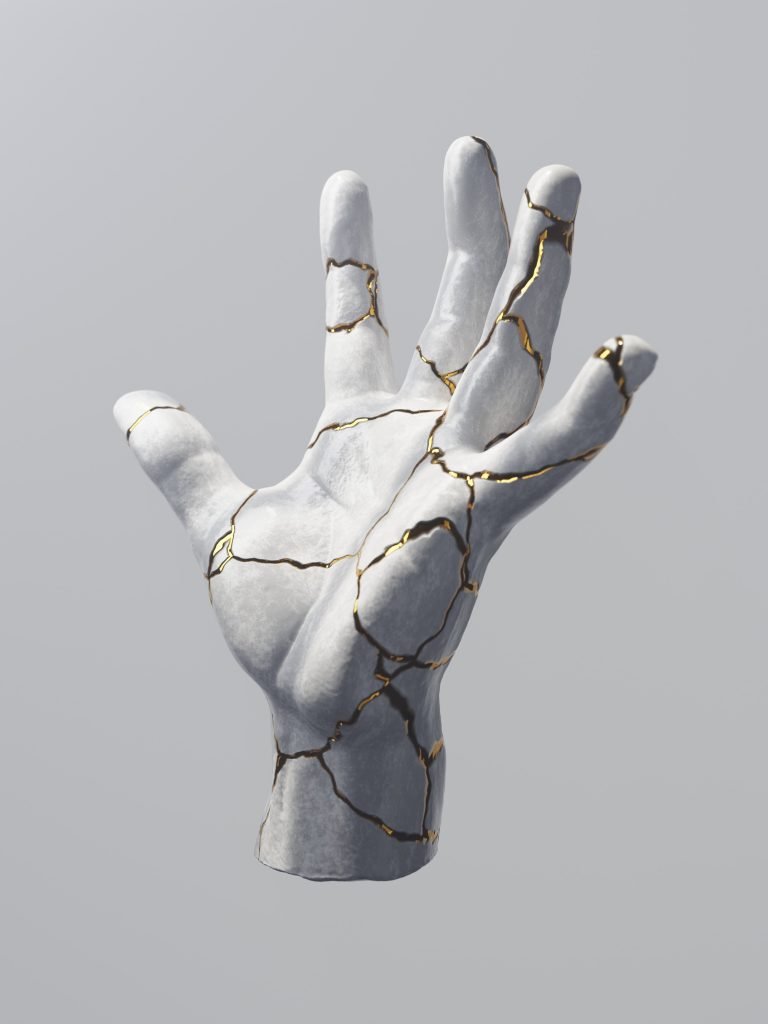Maybe you have heard about the metaverse and the interest of large companies to take ownership of it but you still do not know what it is, if you want to discover it stay to read this article because we will try to solve all your doubts.
The term "metaverse" was created by author Neal Stephenson in his 1992 science fiction novel "Snow Crash," in which realistic avatars found themselves in realistic 3D buildings and other virtual reality environments.
Since then, several developers have pointed the way to a real metaverse, a
examples of this are online game universes such as Fortnite, Minecraft and Roblox, whose creator companies have ambitions to be part of the metaverse.
But what is the metaverse? According to Neal Stephenson's definition in "Snow Crash", the metaverse is a virtual reality that exists parallel to our world and in which users can interact. In other words, it consists of a digital space where people can experience and communicate with each other.
In this sense, we can say that the metaverse is similar to the Internet, although it is composed of much more elaborate and detailed places thanks to virtual reality technology. In addition, as in the Internet, there are different spaces within the metaverse according to the preferences of each person.
In this context, it is important to note that the metaverse is not a mere simulation of our world; it has its own rules and laws that users must respect in order to fully enjoy it. In this way, the metaverse allows us to experiment with other roles and identities, which helps us to explore our own personality in a much deeper way.
Therefore, it is important to note that the metaverse has enormous potential when it comes to learning and education. Thanks to it, students can learn abstract concepts in a much simpler and fun way. In fact, there are already universities that offer courses on metaverse for their students.
For example, a person may decide to participate in a world of action and adventure or choose a more relaxed space where there is only community. In this way, the metaverse becomes an ideal place to escape from reality or to experience things that we could not do in our world.
In short, the metaverse is an increasingly popular digital space thanks to the possibilities it offers for interaction and fun. If you still don't know what it is, we invite you to read on and find out more about this metaverse.
What is the main purpose of the metaverse?
The metaverse is primarily intended to provide a space in which people can experiment and explore different aspects of their identity. This means that people can use this space to represent themselves differently, try out social roles or interact with other users without having to worry about the consequences.
In addition, the metaverse also offers the possibility to experience extreme or even dangerous situations without taking any risk. Finally, the metaverse can also be used to learn new things and experiment with different life forms.
The metaverse is a space where people can explore their identities safely and without consequences. In addition, it offers the possibility to experience extreme or even dangerous situations without taking any risks. Finally, the metaverse can also be used to learn new things and experiment with different life forms.
What are the main characteristics of the metaverse?
The main characteristics of the metaverse are immersion, socialization and scale. Immersion refers to the ability of the metaverse to transport people into a virtual world where they can interact with other users. Socialization refers to the ability of the metaverse to allow people to interact with other users in a safe and private manner. Finally, scale refers to the potential for the metaverse to host tens or even hundreds of millions of people.
The main characteristics of the metaverse are immersion and socialization with other users to interact in a realistic virtual space where there is no risk. In addition, the metaverse has a large scale and can host tens or even hundreds of millions of users in their virtual worlds.
Who is working to move this metaverse forward?
The world's largest companies have taken an interest in the metaverse and are using it as a platform to offer unique and innovative experiences based on virtual reality and augmented reality.
The world's largest companies have become interested in the metaverse as an innovative platform based on virtual reality and augmented reality.
How can people access the metaverse?
People can access the metaverse through devices such as computers, cell phones or virtual reality goggles. Therefore, it is not necessary to use any kind of cheap or expensive device to enjoy it.
People can access the ecosystem through devices such as computers, cell phones or virtual reality goggles and without the need to purchase expensive and unnecessary equipment.
What has marc zuckerberg done about this new trend?
Mark Zuckerberg, founder of Facebook and one of the richest men in the world has made several moves and investments related to the metaverse. One of these investments relates to Facebook's 2014 purchase of Oculus VR to create virtual reality.
Another operation was to buy the British developer Surreal Vision, which works on advanced technology based on optical recognition using intelligent cameras capable of reading facial expressions and detecting objects in space.
Mark Zuckerberg, the CEO of Meta (and creator of Facebook) estimates that the approximate time in which we could see the metaverse become a reality will be five to ten years.
According to Zuckerberg, the metaverse could replace the Internet as we know it today, offering a more inverse and embodied experience, in which we will not only see but also live.
The idea is to offer an alternative hyper-realistic world in which users can live within a digital universe. And the formula to achieve this is through the combination of technology elements such as augmented reality, virtual reality, 3D avatars, and video.
In which you can recreate scenes of everyday life such as: work, play, concerts, conferences and even virtual trips around the world.
Web 3.0 and Metaverse
The web is in a new phase. The arrival of the Web, or rather the WWW (World Wide Web) in 1990 marked the beginning of the digital era. For many years, the classic web, consisting of static pages with text and graphic information, was predominant. However, in 2010 a new way of interacting on the Internet began to emerge: the social web.
The latter is characterized by allowing the exchange of content between users through social networks, collaborative platforms and cloud services. Thanks to these social networks, a global community has been generated that shares information and knowledge in real time. The social web has changed the rules of the game and now it is the turn of the three-dimensional web or web 3.0.
The arrival of the three-dimensional web (web 3.0) will mark a before and after in the way we interact on the Internet. This new stage is driven by the advance of technology in virtual reality (VR) and augmented reality (AR), which allow us to immerse ourselves in a fully digital world.
The 3D web has the potential to change the way we interact, learn and have fun. Thanks to it, we will be able to experience remote situations and places without leaving home. It will also be a very useful tool for education, as it will allow us to learn in an innovative and active way. Finally, it will be an ideal platform for gaming.
The three-dimensional web is undoubtedly the most disruptive thing that has happened on the Internet, and it will reach every corner of the planet. That is why it is known as the web of the three B's: Bigger, Better and Best of all...for free! We will all be able to enjoy it! New and increasingly amazing content will start to appear, missing out on many unique experiences that we live on the social web. The battle for the leadership of this new stage has already begun, and only the most prepared will win.
The three-dimensional web is a reality that is changing the way we interact on the Internet. It is time to open up to this new world and enjoy it to the fullest!
The Web in the 1990s
In the 1990s, the World Wide Web was born, with websites that had more interactive content such as images and videos. The first website was created by Tim Berners-Lee in 1991 and was called worldwideweb.cern.ch.
This new website allowed users to interact with the website content, creating a much more dynamic user experience.
The first browsers were built to support these new interactive web pages, and included Mosaic, one of the most popular early graphical web browsers for the X Window System on Unix systems that was marketed by Netscape Communications Corporation in 1993. In 1994, Microsoft released its first version of Internet Explorer as part of Windows 95. At that time, Web sites began to include more multimedia content such as images and Flash animation. A year later, NCSA released an improved version called "Mosaic Netscape" (later Mozilla) that had faster page load times due to its smaller size compared to other browsers of that period such as Lynx or ViolaWWWW.
In 1996, Google was created by Larry Page and Sergey Brin while they were at Stanford University. It was an Internet search engine that used a mathematical algorithm to rank page relevance for keywords searched by users, giving greater weight to words that appear more frequently on websites.
In 1999, most personal home pages were replaced by dynamic HTML websites due to their simple design and faster loading speeds. This led to the popularity of web browsers such as Netscape Navigator or Internet Explorer, which allowed people with no knowledge of HTML programming language to create simple web pages using drag-and-drop functions in these applications.
The Web of the last decade.
In 2010, social media platforms became popular because they allowed people from all over the world to interact together through different online communities where everyone could share ideas on any topic they wanted. Social media networks are based on web technology, which means they are accessible from any device with Internet access.
Social media platforms such as Facebook or Twitter allow users to convey their opinions and discuss with the world instantly by sharing ideas through posts instead of writing articles for discussion forums.
These social networks have had a great impact on society; people can interact with each other without even knowing it because information spreads very quickly among different groups of people due to this new way of communicating.
Weblogs (or blogs) also became popular during this period because they were online journals that allowed anyone with access to the Web to post text entries about anything they wanted, including images and videos.
Blogs generally focus on specific topics such as politics, technology or entertainment among others depending on what is being discussed at the time.
The evolved Internet
In recent years, a new standard has been implemented to make web pages load faster for mobile devices and improve security issues in browsers: HTML had its first major revision in 1999 with the HTML version.
This included more semantic markup that allowed search engines such as Google or Bing to index website content better than before, as this technology allows crawlers to read the web page as designed by the designers without any difficulty due to common programming errors made by those using obsolete elements. such as presentation tags within their code.
Because of these changes, websites now need fewer resources (such as images) because they can convey information through text only and scripts are no longer needed unless absolutely necessary.
Since 2010, most developers have stopped using Flash due to its numerous security vulnerabilities and the fact that it is not compatible with most mobile devices.
In 2012, the fourth edition of HTML was released which added new elements such as header and footer, as well as new attributes for existing tags such as srcset for images or multiple for videos.
This allowed developers to create websites that looked better on different screen sizes, as they could specify which image or video to use depending on the device the user was using.
For example, a website might display a high-resolution image on desktop computers while using a lower-resolution version of the same image for smartphones.
The future of web technology
At the moment, there are discussions about adding more features to HTML, such as support for augmented reality (AR) that could be used to display information about the real world, for example, by placing virtual objects on top of a table or showing which way north is when using a map. Another possibility would allow websites to understand common user requests, such as "find me something cheap," as they can already do this with search engines, but now it will improve accuracy and speed if done directly through web pages rather than having
Major growth drivers such as virtual reality real estate, cryptocurrency or NFTs.
As spaces develop, cryptocurrency will help drive the exploration of the new era.
Whether it is complex investments such as digital land to something as simple as a video game avatar mask, cryptocurrencies will undoubtedly be a major way to exchange goods and services in this virtualized world without government.
A parallel virtual universe in which we can invest in plots of virtual land, buy luxury clothes or invest in NFTs.
So much growth is being experienced that in recent times virtual 16x16m plots of land have gone from selling for $20 to $6,000.
In relation to the above mentioned about luxury clothing, major brands such as Gucci, Prada or Ralph Lauren, today are already part of The Fashion District, a space where users can buy virtual luxury clothing.
Regarding NFT's, we have a very interesting article that we wrote last week and you can visit it in our blog.








